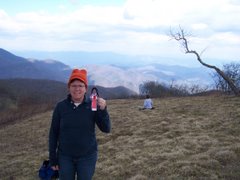Post by Rebekah Lang
When we returned from the TTEC Spring Regional Workshop, there were big ideas that our team discussed:
- We'd like to develop a school-wide Hiker's Guide that could be taught like our current "First Six Weeks of School." We want to include Leave No Trace principles, Hiking 101 and many other things we've learned from this workshop! They provided us with materials for hundreds of lessons! We just need to figure out a good framework and develop grade level standards for our school.
- Nature Journals: We were given time and techniques for nature journaling. My 7th grade students are studying agriculture and already had nature journals primarily used in science class. I jumped on this chance to try to incorporate the nature journals and taught them to be better observers using the timed observation activity. I integrated this into my math class where students had been learning about fractals. I had them notice details their choice of fractal shaped plants (broccoli, ferns, etc). The students LOVED it and asked to try it again the very next class! That level of engagement was so encouraging!
- Hiker's Backpacks: After learning what supplies should be in every hiker's backpack, I've decided that I'd like to find a way to have a "class set" of hiker's backpacks to sign out for when we do real hikes on South Mountain or on the Appalachian Trail. I'm asking students to donate their old backpacks at the end of the year to start to gather supplies for next year.
Ultimately, I was just so excited to see how TTEC program fits in so beautifully with our curriculum model (which uses the environment as the integrating context for learning). The Spring Regional Workshop has so many immediately applicable ideas that I cannot wait for summer!

